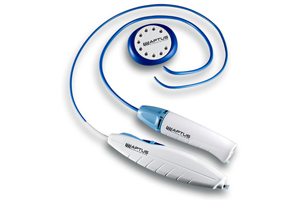
A group of consumer advocates demanded that the FDA heighten testing requirements for certain medical devices, taking exception to the agency’s 510(k) clearance of Aptus Endosystems Inc.’s HeliFX endostapling system.
In a letter to FDA commissioner Dr. Margaret Hamburg, a coalition of 12 patient safety groups expressed their concern that the de novo pathway, intended for moderate-risk products with no substantial equivalents already on the market, was inappropriately used for higher-risk products – like the HeliFX – that should have gone though the more rigorous pre-market approval process.
Although not at odds with the de novo system itself, the troup argued that the HeliFX system, categorized as a Class III device and designed to fix leaks and migration in implanted endografts, circumvented the more appropriate and stringent PMA pathway by claiming to be something it isn’t.
"FDA has responded to the Institute of Medicine’s recommendation by starting to beef up the de novo process, but instead of selecting a moderate-risk device, as the law requires, the FDA inappropriately used the de novo review process for a device that is obviously intended to save lives," Dr. Diana Zuckerman, of the National Research Center for Women & Families, one of the signers of the letter, said in prepared remarks. "To get around the law, the FDA is claiming that the product is not life-saving and therefore does not need to be tested by rigorous clinical trials and inspections, as is required for life-saving devices."
In the letter the groups ask that the FDA "provide an explanation of how these devices, which repair an aortic endograft, do not satisfy the criteria that the FDA sets for high-risk devices."
Aptus won the FDA’s OK in November 2011, making HeliFX the 1st product on the market approved to repair aortic grafts that migrate, leak or are at risk of doing either.
An endograft is a tube used to repair a bulge in the wall of the large blood vessel that carries blood away from the heart. Aptus’ HeliFX is a minimally invasive system of staples, delivered via catheter, that allows a surgeon to reach the blood vessel and staple the top edges of the endograft to the tissue to anchor it in place.
The FDA’s decision was based on data from a clinical trial of 154 patients who received a total of 810 endostaples, according to the FDA. After 1 year of follow-up with regular CT scans, there were no incidents of staple fracture and no patients experienced movement in their endografts, although 1 patient did have an endoleak.
That wasn’t enough for the consumer groups, who wrote that "the limited clinical testing of the endovascular suturing system was inadequate to prove the safety or efficacy of this implanted device for most patients, since it included only 10 women (and 144 men), no comparison control group, and only 1 year of follow-up."
The organizations asked Hamburg to rescind HeliFX’s 510(k) clearance and force the product through the PMA pathway as a life-saving device.
Aptus Endosystems did not immediately return requests for comment.
The groups involved in petition are:
- American Medical Women’s Assn.
- Center for Medical Consumers
- Community Access National Network
- Consumers Union
- Jacobs Institute of Women’ Health
- National Consumers League
- National Research Center for Women & Families / Cancer Prevention & Treatment Fund
- National Women’s Health Network
- Our Bodies Ourselves
- Public Citizen
- U.S. PIRG
- WoodyMatters

